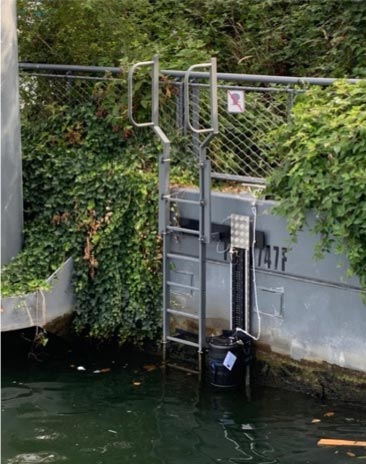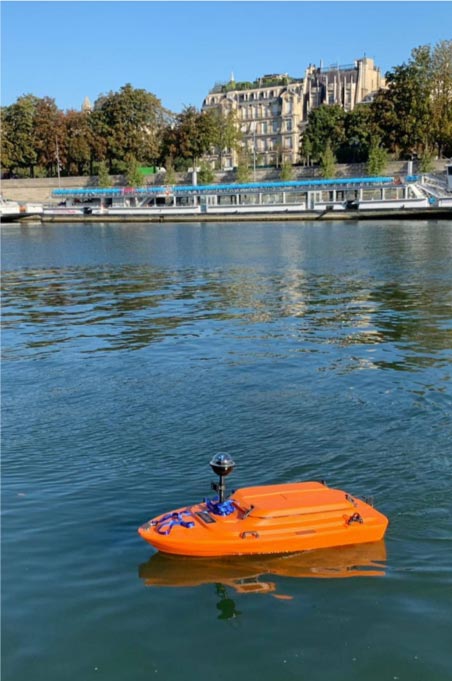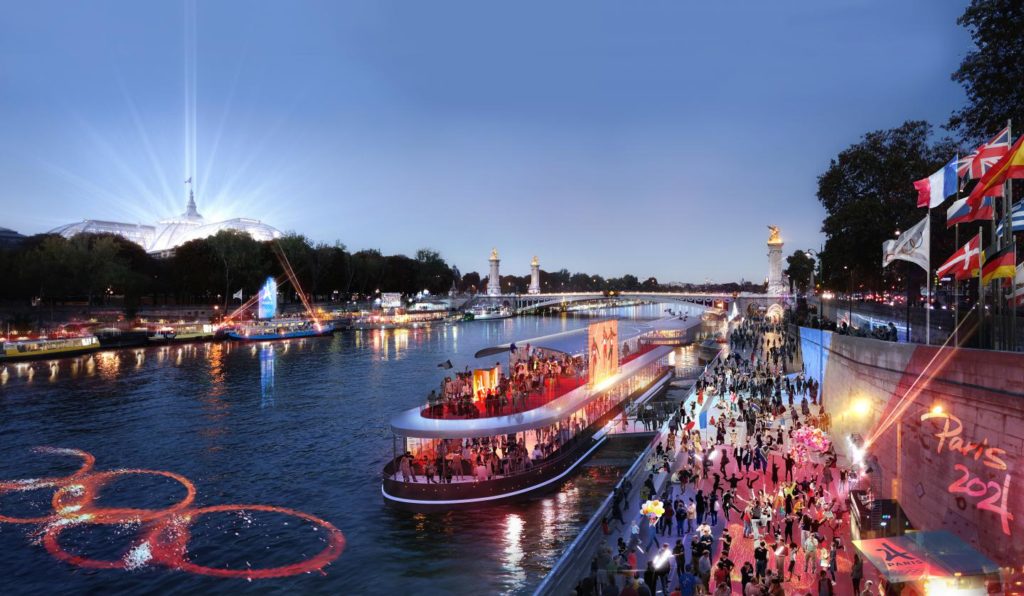With Europe’s cities experiencing scorching temperatures in the recent summer heatwave, many have headed to outdoor bathing spots for a socially-distant dip. The trend to reclaim urban riversides as public pools is a hit with city swimmers, but how can they be sure the water is safe for bathing? Digital-water.city is answering this challenge with an innovative connected system for near-real-time monitoring of bacterial concentration in public waterways. In this interview, Fluidion CEO Dan Angelescu explains the science behind the solution – and how it may even help Olympians get across the finish line in the 2024 Paris Games.
Your company Fluidion specialises in water quality monitoring technology – what kind of dangers hide in a city’s waterways and how do you hunt them down?
Wastewater can host many nasty viruses and bacteria, but it’s impossible to run tests for each contaminant individually. What we test for instead are E. coli and enterococci bacteria: while not necessarily dangerous themselves, these flag contamination as they are prevalent in the faecal matter where more dangerous bugs lurk. This is why WHO and EU guidelines use E. coli levels as an indicator of whether water is safe for swimming.
Testing for bacteria in water is not so straightforward, however. While a chemical diffuses throughout a body of liquid – so analysing a small drop reveals the same chemicals as in a bigger volume – for bacteria, that’s not the case. Bacteria are living organisms measuring several microns in width – many times smaller than the width of a hair on your head. One drop taken from a river might not have a single bacterium, but the next drop could have one, or five or ten. So even taking the standard sample of 100 ml required by European regulations is still a limited snapshot. Considering the huge amount of water in a river or lake, it may not be representative of what’s around it.
And how does your solution address this challenge?
Our ALERT system enables automated, near real-time measurement of bacterial concentration directly at the sampling site. It can be installed in a matter of minutes. From the outside it looks like a plastic cylindrical container that you can simply put floating in a river. Inside are seven vial reactors, where water samples are mixed with a culture medium allowing bacteria to grow, and by recording this growth with an optical sensor, we can quantify the bacteria present. Seven vials allow for seven measurements before the cartridges need to be changed.
Using a little remote-control boat, we can also collect samples at multiple places in the river for analysis – giving a picture of water quality at different locations, too. Overall, monitoring teams no longer need to rely on one measurement at a single point in time, but can carry out multiple automated measurements without being physically on site. It’s much faster, too: conventional techniques can take up to three days from sampling to result, whereas ALERT delivers measurement data in near real-time.

The solution in situ at the riverside 
Fluidion’s remote-controlled boat for mobile sampling
Ok: so the system measures more rapidly, directly at the site – but how does the accuracy compare with conventional sampling technology?
Well by automating the process, we actually enhance accuracy by eliminating potential sources of human error in traditional manual sample collection: say the technician doesn’t scoop the water from the right depth, the sample isn’t stored at the right temperature or gets contaminated during transport – automation sidesteps these common risks.
Where does digital tech feature in the solution?
Data from the sensor’s optical, analogue measurement is transformed into digital form – ones and zeros – and sent wirelessly over a network so that it can be accessed remotely. The connectivity is two-way, meaning it’s also possible to start measurements remotely. Let’s say you’re responsible for monitoring water quality at a Berlin bathing site, you’re on the tram and you see it starts to pour rain – meaning high chance of contamination from combined sewer overflow. No problem: just take out your cellphone and send the ‘start measurement’ command right from your seat. By the time you get to the next station, you will already have the first data points coming in, with full quantification being complete in a few hours.
How have you been developing the technology within the digital-water.city project?
We had similar systems installed in the Seine river in Paris, and now through digital-water.city we’re improving the sensors to make maintenance much easier and enable larger-scale reproduction. In Berlin, we have been working with KWB to install these systems in the Spree river. And in Milan, we have a slightly different focus, contributing to a solution for treating wastewater so it can be used in agriculture – here, our system measures bacteria levels to evaluate the disinfection process.
In Paris, our sensors will also contribute to another DWC trial of a machine-based early warning system with an exciting objective: to ensure the water is safe for athletes using the Seine for aquatic events like triathlon during the 2024 Olympic Games. The solution’s near-real-time analysis will tell organisers if water quality is up to scratch on the day of an event, or if they should postpone for a day or two.

And what about beyond the DWC cities – is there interest from other municipalities?
Definitely – we are already working with New York, Los Angeles, and several cities in Asia and Africa. Digital-water.city is great because it connects us with many experts so we can develop the technology to benefit all stakeholders – utilities, bathing water managers, health authorities – and provide a solution that can be used anywhere in the world.
Have you encountered anything unexpected or surprising during the project so far?
Well I guess I shouldn’t tell you about the time our remote-controlled boat escaped and we had to swim to get it back… (laughs) But as for the research, we have indeed had some unexpected results as we measured new types of enzyme-rich water like stormwater outflows, where we needed to adapt the technology. The most important thing we’ve learned is that there is real interest in this solution and that people are willing to work with us on it. This collaboration is what makes digital-water.city so great, as it helps us bring the benefits of the technology to a broader market.
Dan Angelescu is CEO of Fluidion, a Paris-based company specialising in autonomous and in-situ sampling and measurement solutions for environmental monitoring and water quality applications. A physicist by training, Mr Angelescou studied at Caltech and Princeton. He went on to work at Schlumberger and as a professor at University Paris-Est, before founding Fluidion in 2012. Fluidion is a member of the digital-water.city research consortium.
